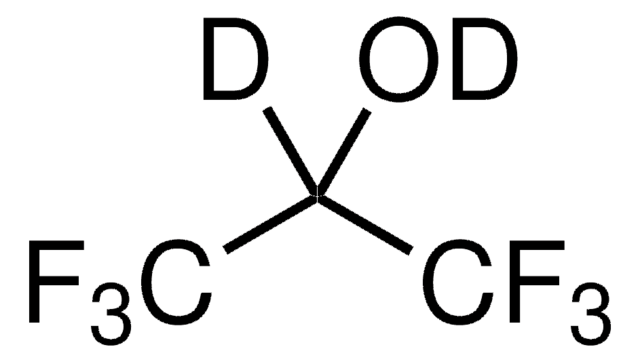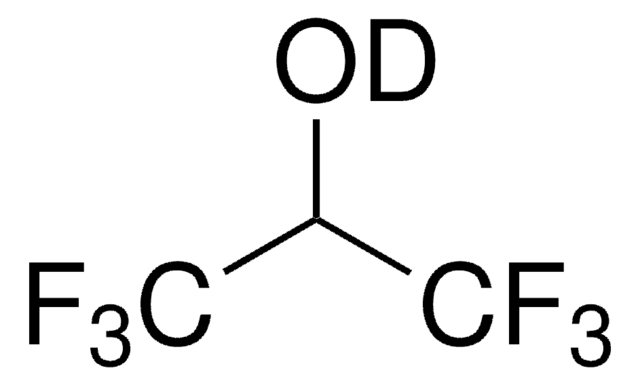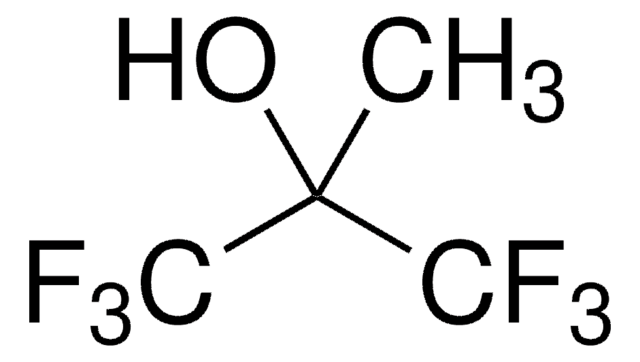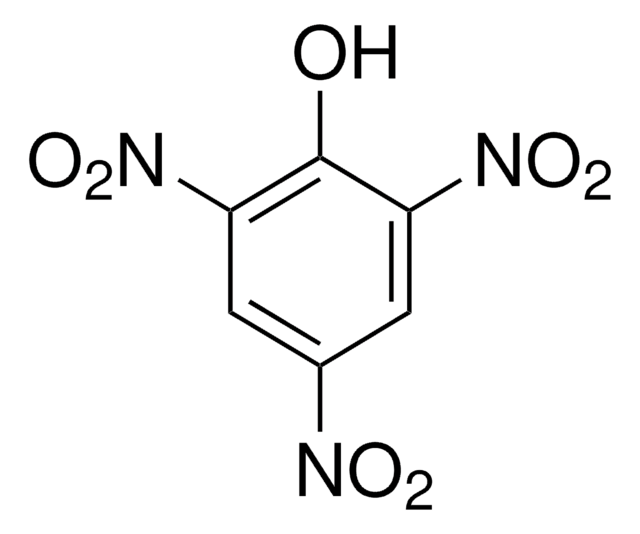52517
1,1,1,3,3,3-Hexafluor-2-propanol
for GC derivatization, LiChropur™, ≥99.8%
Synonym(e):
HFP, Hexafluorisopropanol
About This Item
Empfohlene Produkte
Qualität
for GC derivatization
LiChropur™
Qualitätsniveau
Assay
≥99.8% (GC)
≥99.8%
Eignung der Reaktion
reagent type: derivatization reagent
reaction type: Acylations
reagent type: derivatization reagent
reaction type: Esterifications
Methode(n)
gas chromatography (GC): suitable
Brechungsindex
n20/D 1.275 (lit.)
bp
59 °C (lit.)
mp (Schmelzpunkt)
−4 °C (lit.)
Dichte
1.596 g/mL at 25 °C (lit.)
SMILES String
OC(C(F)(F)F)C(F)(F)F
InChI
1S/C3H2F6O/c4-2(5,6)1(10)3(7,8)9/h1,10H
InChIKey
BYEAHWXPCBROCE-UHFFFAOYSA-N
Suchen Sie nach ähnlichen Produkten? Aufrufen Leitfaden zum Produktvergleich
Allgemeine Beschreibung
Anwendung
Sonstige Hinweise
Rechtliche Hinweise
Signalwort
Danger
H-Sätze
Gefahreneinstufungen
Eye Dam. 1 - Repr. 2 - Skin Corr. 1A - STOT RE 2
Lagerklassenschlüssel
8A - Combustible corrosive hazardous materials
WGK
WGK 2
Flammpunkt (°F)
No data available
Flammpunkt (°C)
No data available
Persönliche Schutzausrüstung
Faceshields, Gloves, Goggles
Hier finden Sie alle aktuellen Versionen:
Besitzen Sie dieses Produkt bereits?
In der Dokumentenbibliothek finden Sie die Dokumentation zu den Produkten, die Sie kürzlich erworben haben.
Kunden haben sich ebenfalls angesehen
Unser Team von Wissenschaftlern verfügt über Erfahrung in allen Forschungsbereichen einschließlich Life Science, Materialwissenschaften, chemischer Synthese, Chromatographie, Analytik und vielen mehr..
Setzen Sie sich mit dem technischen Dienst in Verbindung.












